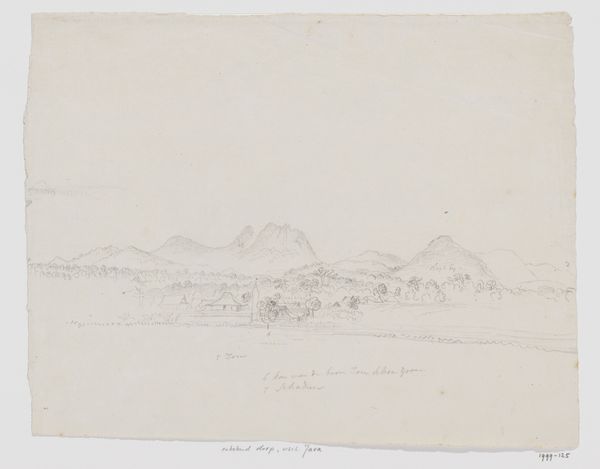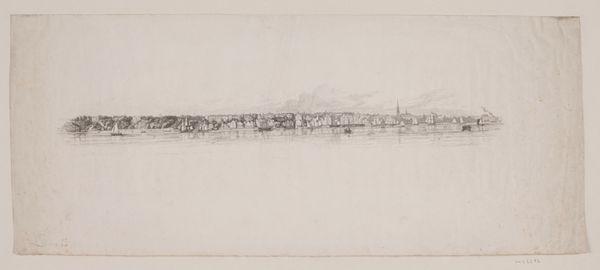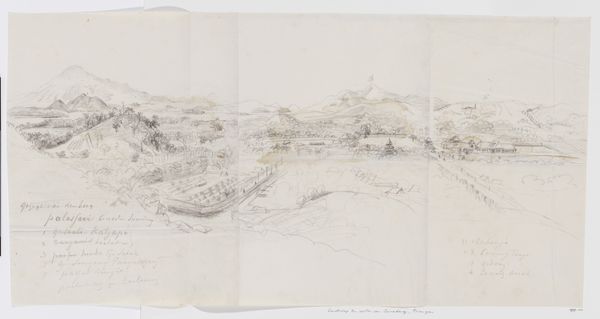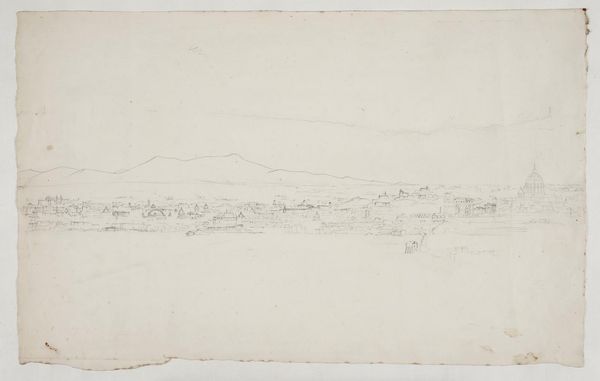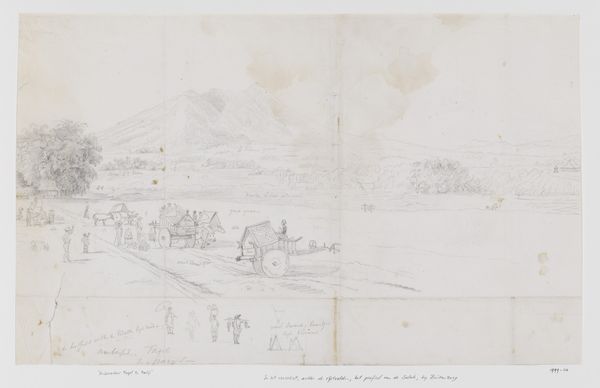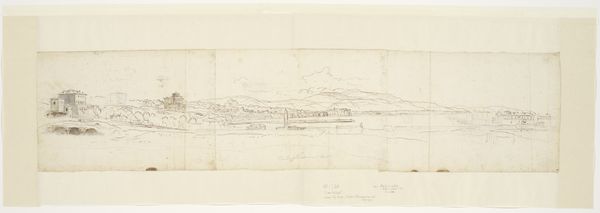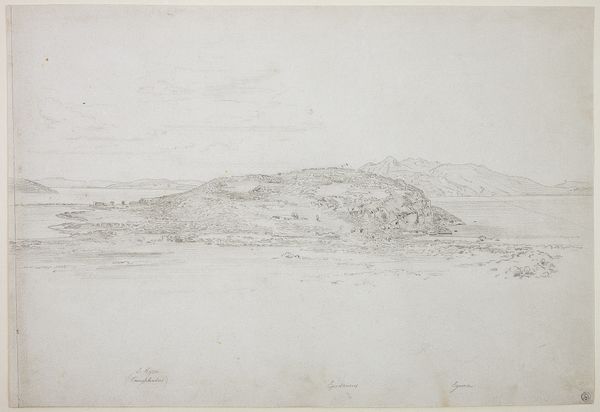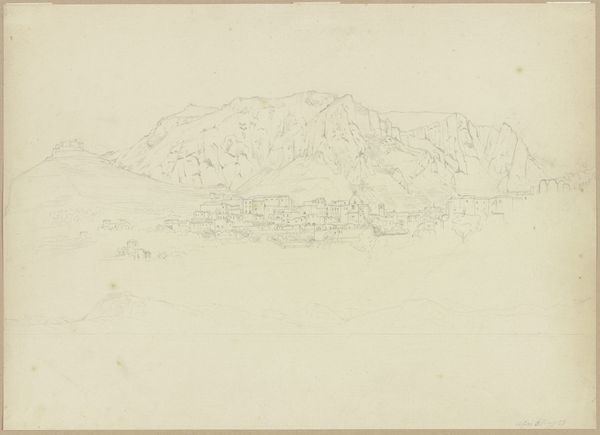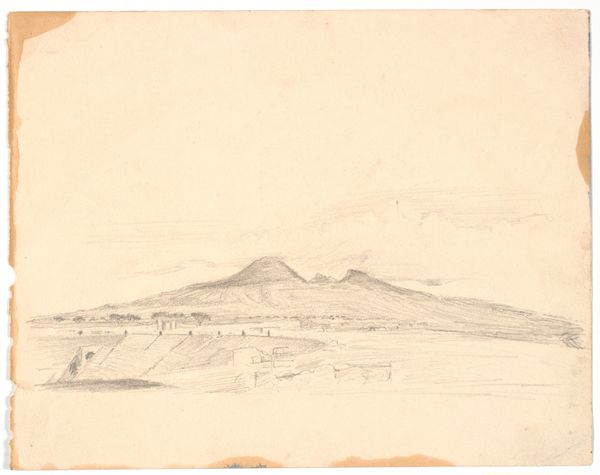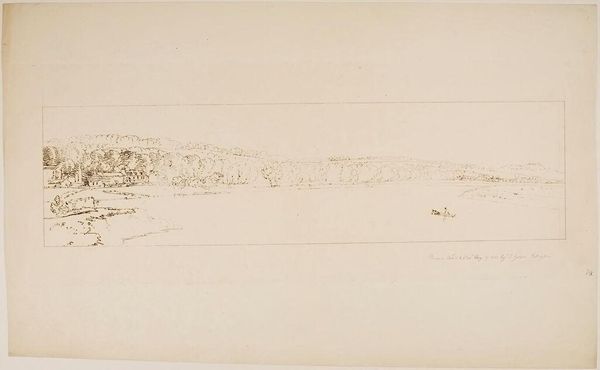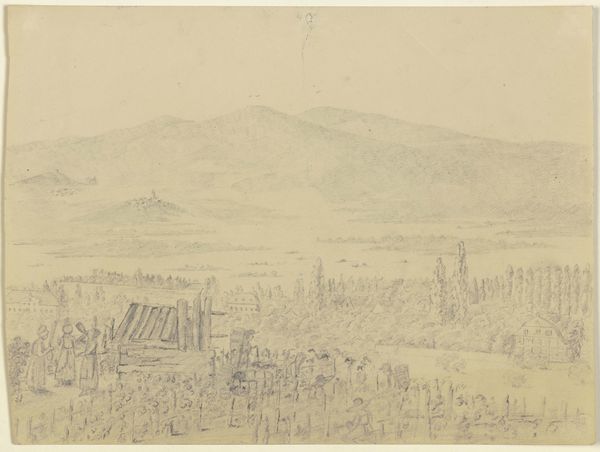
Copyright: Public Domain
Curator: Let’s turn our attention to Johann Wilhelm Schirmer's "Ansicht von Vaison-la-Romaine," created in 1851. This artwork, housed here at the Städel Museum, is rendered in pencil on paper, demonstrating Schirmer's profound connection to landscape art. Editor: My first impression is one of faded grandeur. It's like looking at a memory, soft and muted, but there's still a strength in the structure, the skeletal remains of something powerful. What I mean is, it almost whispers its existence, doesn’t it? Curator: Indeed. Considering the sociopolitical environment of mid-19th century Europe, Schirmer's choice of such a subject can be read as an exploration of cultural identity and historical consciousness, reflecting on the decline of once-mighty empires through the romanticized gaze upon landscape and ruins. Editor: Yes, but it’s the details that are fascinating—the subtle strokes hinting at architectural forms amidst nature's overwhelming beauty. Did you notice the subtle ways the man-made fades back into the hillside? It's like nature reasserting itself, always reclaiming its own territory. Curator: Precisely. Romanticism often idealized nature as a space of freedom, while subtly criticizing the constraints of industrial modernity. The presence of the Roman ruins prompts us to examine themes of imperialism, colonialism, and power structures across time. How does Schirmer present nature to us—as a space of national identity? Or resistance? Editor: I think, and maybe this is overly sentimental, there’s just an immense melancholy in the fading away, though. It's beautiful but tinged with loss. To your earlier question, yes it seems that Schirmer used landscape as a mirror, holding up what once was and then whispering what might have been or will become of them. Curator: Schirmer’s depiction of Vaison-la-Romaine invites us to contemplate questions of memory, cultural heritage, and how landscapes themselves become contested sites of historical interpretation. The soft execution might be an active decision to bring forward conversation around legacy. Editor: Perhaps. Either way, Schirmer certainly made me reflect on it all! I never expected so much to come from a simple pencil drawing.
Comments
No comments
Be the first to comment and join the conversation on the ultimate creative platform.
